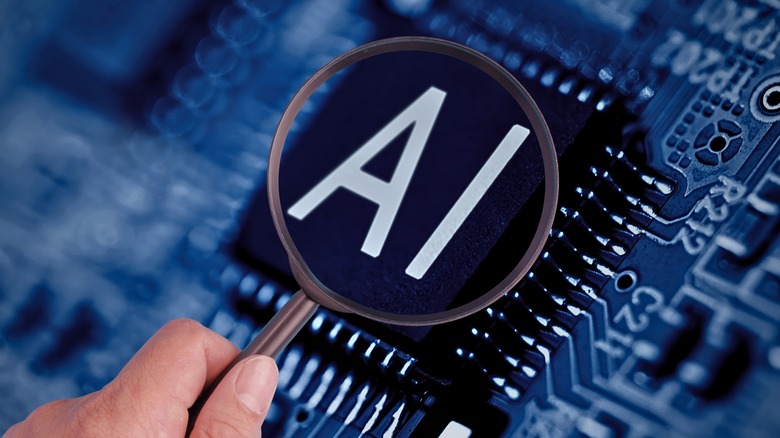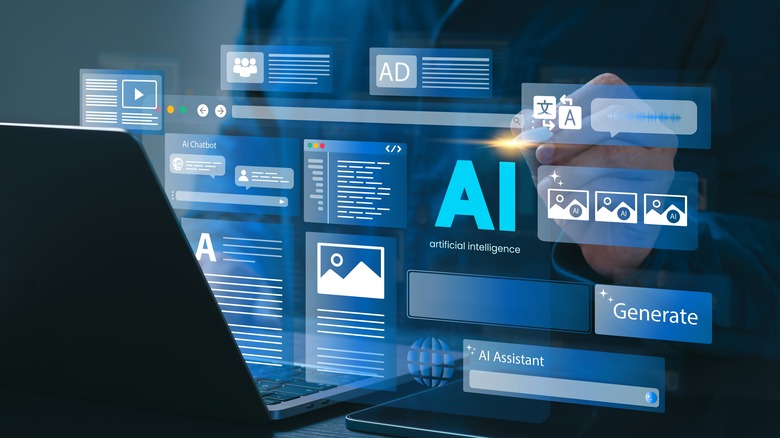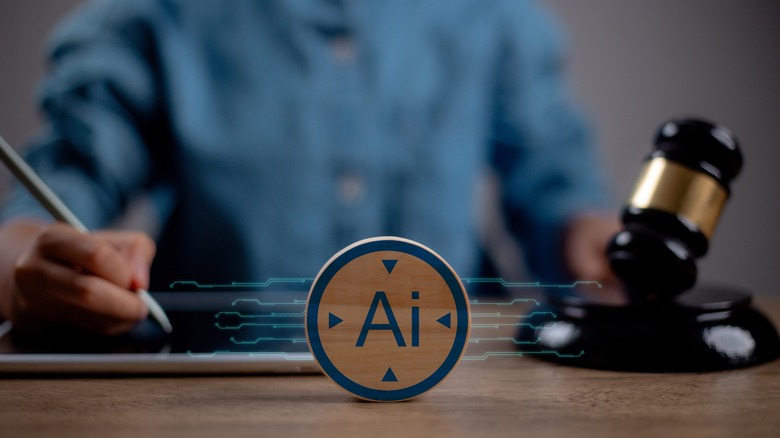Just How Much Energy Does Generating An AI Image Actually Use?
Image generation with the use of artificial intelligence has become commonplace online, with plenty of buzz surrounding the matter. Folks have debated the ethics of such technology and how it goes about forming images, while others have come up with ways to tell if an image is AI generated or the real deal. Unfortunately, something that is often overlooked in the grand scheme of things is the amount of energy behind even the top AI image generators available in 2024. Though it may seem to be magic, it's certainly not, and it takes a decent measure of power to conjure up AI pictures.
A study from tech company Hugging Face and Carnegie Mellon University sought to answer the question of just how much energy is needed to make AI images a viewable reality. Their findings show that a single image generation can consume as much as half of a smartphone's battery charge, approximately 0.011 kilowatt hours of energy. They note that this isn't necessarily a concrete number, as there are variables with AI image generation such as the model used and the image size that can cause the amount of energy necessary to fluctuate. That may not seem like much, but as some estimates put the number of AI images generated per day at around 34 million, it adds up.
Naturally, the significance of the energy needed for AI image generation hasn't gone unnoticed on an environmental or political level.
AI image generation takes an environmental toll
Energy consumption has been a hot topic in the media of late, with AI image generation only being the latest trend to go under the microscope. For instance, the sizable energy consumption that has fueled the sad evolution of cryptocurrency — in the neighborhood of 0.6% to 2.3% of the United States' total annual electricity use – has made frequent headlines. In a similar vein, the environmental impact of such energy-heavy practices has also become a major topic of discussion. What many may not know is that in addition to using electricity to generate images, AI models require a considerable amount of water to operate properly too.
According to the University of California, approximately half a liter of fresh water is needed to conduct between 20 and 50 typical AI chatbot queries, on average. This water is needed to keep servers cool, allowing models to run as efficiently as possible. Concerningly, only a fraction of operators have been forthcoming with their water use data. With only so much water and electricity to go around, naturally, AI companies are looking into alternative energy sources to keep the models running. One proposed solution is nuclear fusion, which can generate tons of power and lacks the pollution and waste of other, more traditional energy-creation methods. This may seem great, but the tech needed to create fusion isn't perfect yet, and there's likely decades to go until it's ready for widespread use. Thus, increasingly scarce resources will continue to be used in the meantime.
Political action taken regarding AI's environmental footprint
With the increasing prevalence of AI tech, the scale of the electricity use, and fresh water being in incredibly high demand, several politicians have taken action regarding AI's environmental impact. United States senators led by Massachusetts' Edward Markey have brought forth legislation to reveal the full extent of AI's energy footprint. If the act is passed, the law will be enforced through the National Institute of Standards and Technology, which will set standards for AI models, including reporting, to address environmental concerns over excessive electricity and water use. As of the time of writing, it has yet to be moved through the Senate, let alone reach the House of Representatives or make it to the President's desk.
The issue has become a global concern, and in a report from The Guardian, it was explained that in February 2025, a multi-country AI summit will be held in France, with a key point of discussion being AI companies' ecological impact. An idea being considered is to have companies rated based on their environmental impression. Google and Microsoft in particular have publicly highlighted that the level of consumption that comes with their respective AI models puts emission reduction targets at risk.


